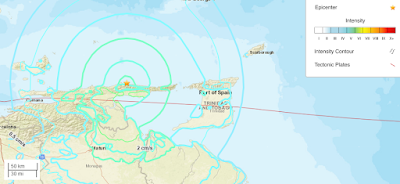The Wallacean bioregion lies between the Asian and Australian continents, and has been recognised as significant for our understanding of evolution and biogeography since the nineteenth century. The islands of Wallacea are separated from the Asian and Australian landmasses by areas of deep water, and have never been connected to either area by a land-bridge, which means that every Animal and Plant there is descended from individuals that managed to cross by sea or air, leading to a huge number of endemic species (species not found anywhere else). Despite this significance, many groups of organisms are relatively understudied in Wallacea, and new species are still discovered there on a regular basis.
Nightjars are nocturnal Birds with highly cryptic plumage, seldom observed by Humans despite a near-global distribution. Their highly unobtrusive nature, combined with the similar appearance of different species of Nightjar makes them extremely hard to study, although in recent years, some progress has been made on differentiating Nightjar species by their songs, aided by the fact that Nightjars will respond to the recorded calls of members of their own species, but not those of other species.
The islands of Timur and Wetar, in the Lesser Sunda Islands, are known to be home to a form of Long-tailed Nightjar (Caprimulgus sp.), which is small in size, leading to the suggestion that it might be a population of Caprimulgus manillensis, otherwise known from the Philippines, Caprimulgus celebensis, otherwise known from Sulawesi, or Caprimulgus macrurus, which is distributed from Pakistan to Australia, and generally accepted to be a species complex rather than a single species.
In a paper published in the journal Ibis on 24 June 2024, the late Ben King of the Department of Ornithology at the American Museum of Natural History, George Sangster of the Department of Bioinformatics and Genetics at the Swedish Museum of Natural History, and the Naturalis Biodiversity Centre, Colin Trainor of the College of Engineering, IT and Environment at Charles Darwin University, Martin Irestedt, also of the Department of Bioinformatics and Genetics at the Swedish Museum of Natural History, Dewi Prawiradlilaga of the Museum Zoologicum Bogoriense at the Cibinong Science Centre, and Per Ericson, again of the Department of Bioinformatics and Genetics at the Swedish Museum of Natural History, formally describe the Nightjars found on Timor and Wetar islands as a new species.
King et al. compared recordings of Nightjars from Timor and Wetar to recordings of Nightjars from other areas, finding that these calls were quire distinct. They then compiled a genetic phylogeny for the genus Caprimulgus including two museum specimens collected from Timor and Wetar, again recovering these as a separate species, most closely related to Mees's Nightjar, Caprimulgus meesi, which is found on Flores and Sumba islands, but separated from this by a mean sequence divergence of 5.8%, considered sufficient to differentiate species (the mean sequence divergence between Humans and Chimpanzees is only 1.23%).
The new species is named Caprimulgus ritae in honour of Rita Bobbin, a long-term friend of Ben King. It is described on the basis of four museum specimens in the collections of the American Museum of Natural History and the Naturalis Biodiversity Centre.
Caprimulgus ritae is brownish in colour with a white and cinnamon speckled pattern and a distinct white bar on its tail. It is found only on the islands of Timor and Wetar. It is a forest specialist, although it appears to be quite flexible about the forests it will live in, having been recorded in a range of environments from tall evergreen forest to highly deciduous dry forest. It generally appears to favour lowlands, but has been recorded as high as 1500 m above sealevel.
The island of Wetar still retains more than 95% of its original vegetation cover, including extensive areas of forest, while both West Timor and Timor-Leste have extensive forest reserves, which appear to form primary habitats for the Nightjar, which King et al. estimate to have a population probably numbered in the hundreds or thousands.
See also...









%20(1)%20(1)%20(1).png)
.jpg)








%20(1)%20(1)%20(1).png)











%20(1)%20(1).png)








%20(1)%20(1).png)










%20(1)%20(1).png)